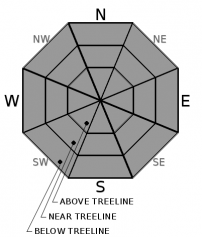| Friday | Friday Night | Saturday | |
|---|---|---|---|
| Weather: | Partly cloudy then becoming sunny. Snow levels below 7000 feet. Chance of precipitation is 0%. | Partly cloudy. Snow levels below 7000 feet. Chance of precipitation is 0%. | Partly cloudy then becoming mostly cloudy. Slight chance of snow in the morning, then snow likely in the afternoon. Snow levels below 7000 feet. Chance of precipitation is 70%. |
| Temperatures: | 39 to 45. deg. F. | 22 to 27. deg. F. | 35 to 41. deg. F. |
| Mid Slope Winds: | Light winds becoming west around 15 mph in the afternoon. Gusts up to 30 mph. | Southwest around 15 mph with gusts to 35 mph in the evening becoming light. | Southwest 15 to 25 mph. Gusts up to 30 mph increasing to 45 mph in the afternoon. |
| Expected snowfall: | No accumulation. | SWE = none. | No accumulation. | SWE = none. | 60% probability of 1 to 2 inches. 40% probability of up to 4 inches. | SWE = up to 0.30 inch. |
| Friday | Friday Night | Saturday | |
|---|---|---|---|
| Weather: | Partly cloudy then becoming sunny. Snow levels below 7000 feet. Chance of precipitation is 0%. | Partly cloudy. Snow levels below 7000 feet. Chance of precipitation is 0%. | Partly cloudy then becoming mostly cloudy. Slight chance of snow in the morning, then snow likely in the afternoon. Snow levels below 7000 feet. Chance of precipitation is 65%. |
| Temperatures: | 33 to 39. deg. F. | 19 to 24. deg. F. | 29 to 35. deg. F. |
| Ridge Top Winds: | West 15 to 20 mph with gusts to 35 mph. | Southwest 15 to 20 mph with gusts to 35 mph. | Southwest 15 to 30 mph with gusts to 60 mph increasing to 30 to 50 mph with gusts to 95 mph in the afternoon. |
| Expected snowfall: | No accumulation. | SWE = none. | No accumulation. | SWE = none. | 70% probability 1 to 3 inches. 30% probability up to 5 inches. | SWE = up to 0.30 inch. |


















